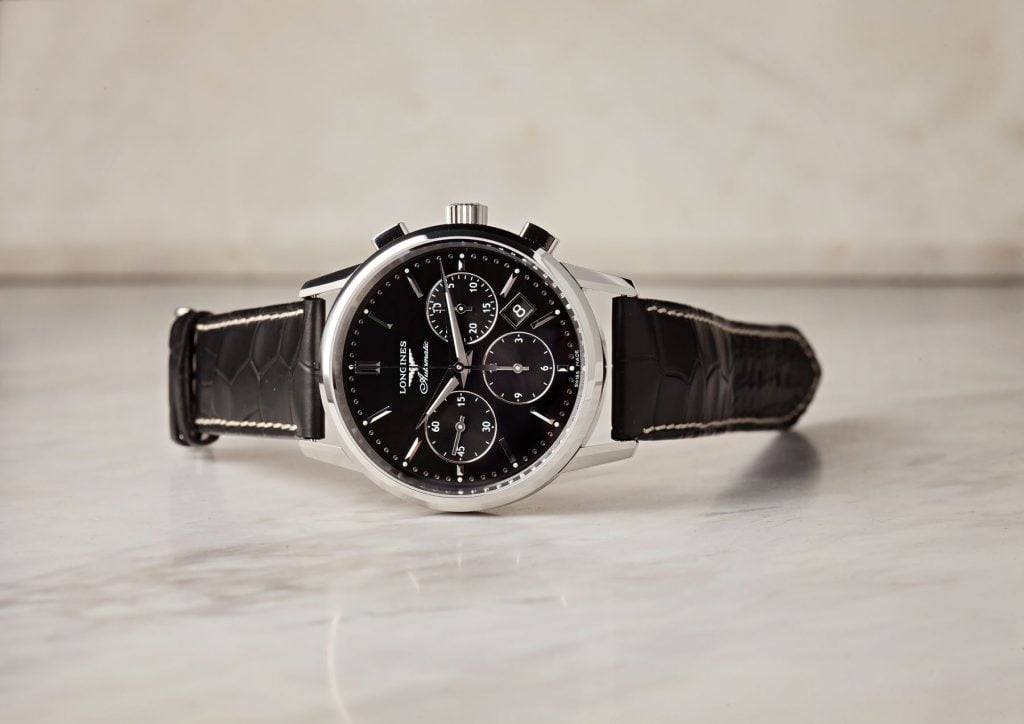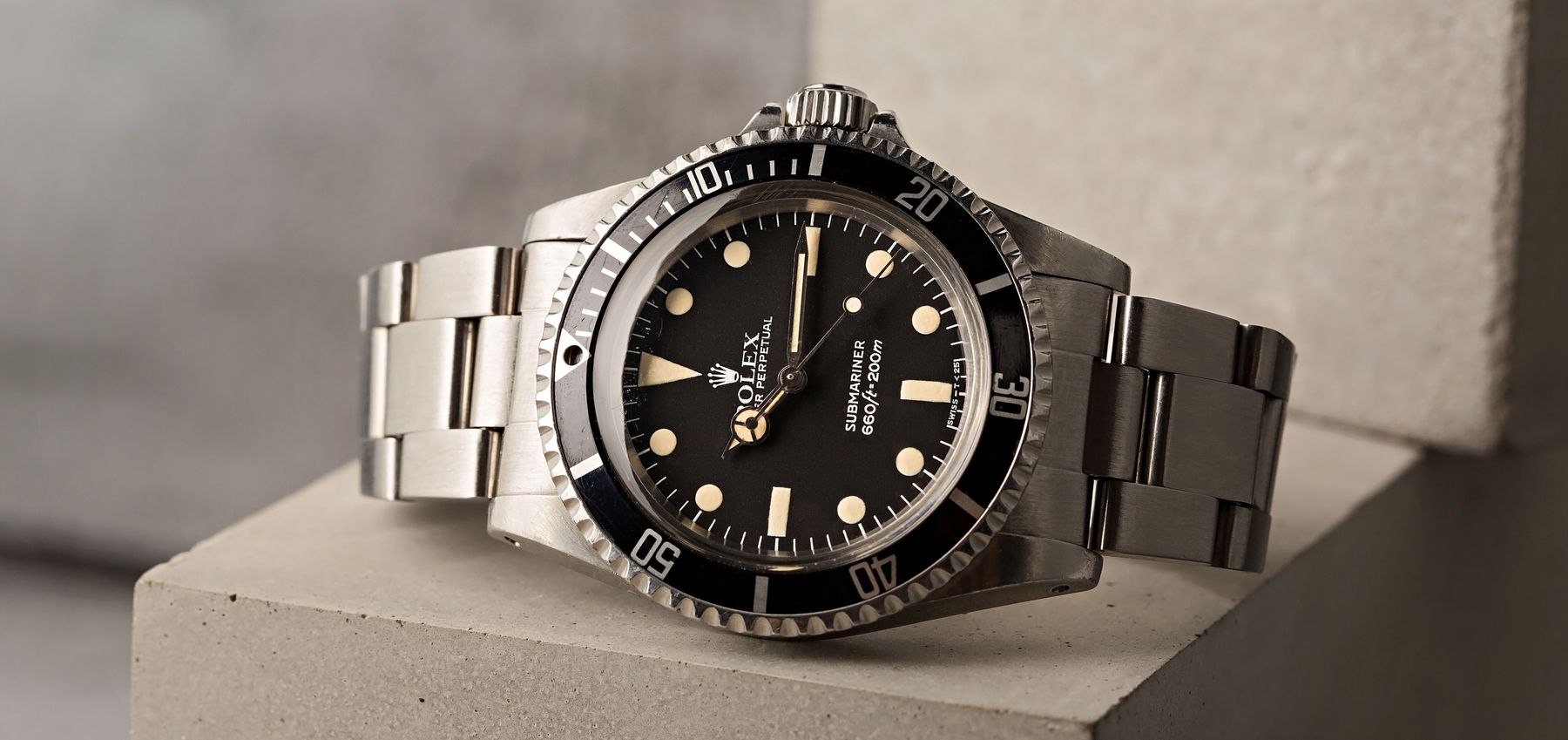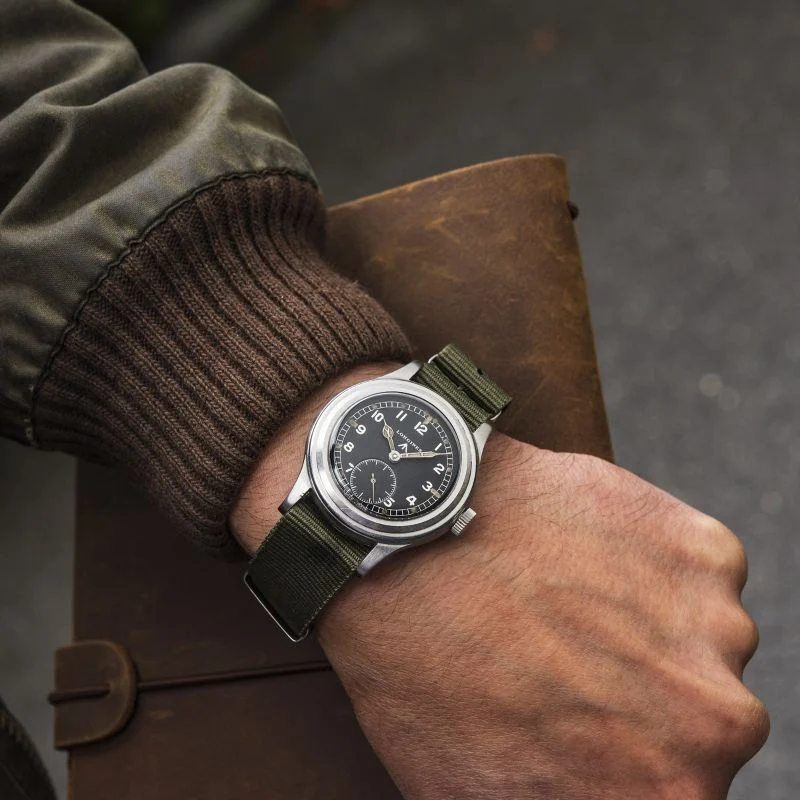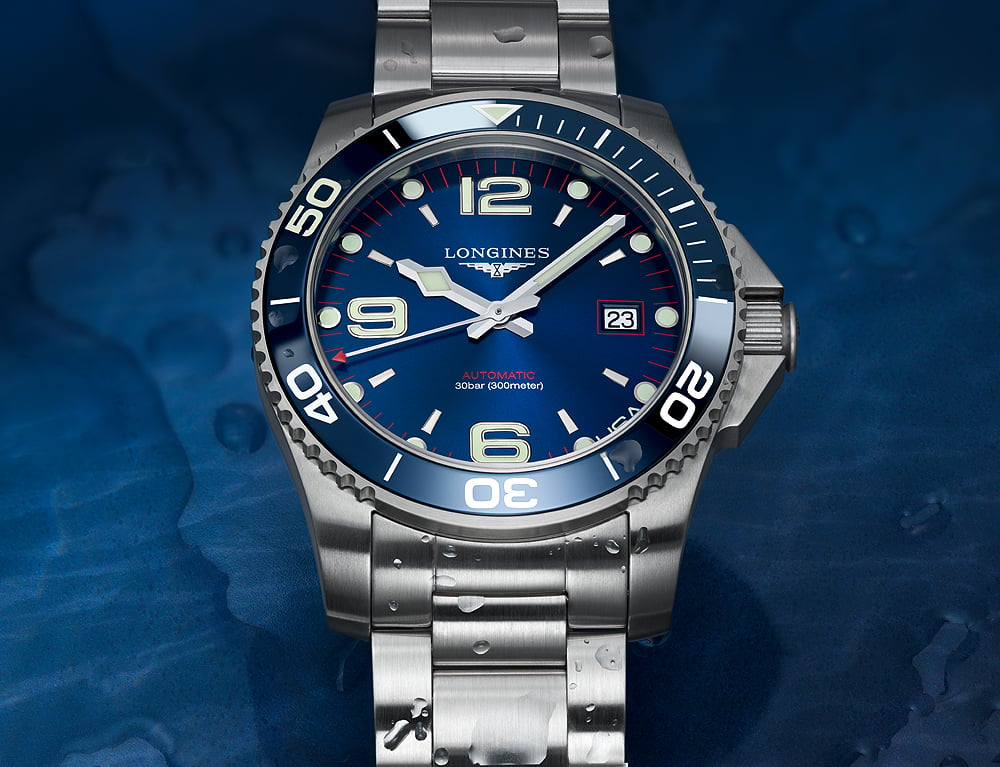The column wheel chronograph is a fixture of the watchmaking industry, used by some of the biggest names in the game, including Zenith, Omega, Patek Philippe, and Vacheron Constantin. The mechanism is typically tucked away inside expensive timepieces. However, several brands on the more affordable end of the spectrum have also begun to use the mechanism, including Longines. The company released its column wheel chronograph a little over a decade ago in 2010 and continues to employ it within its current catalog. But what is the column wheel chronograph?
We’ve compiled everything you need to know about the mechanism, including its history, how it works, pricing, and most importantly, the best place to buy the Longines Column-Wheel Chronograph.
Click here to learn more about the history of Longines Watches.
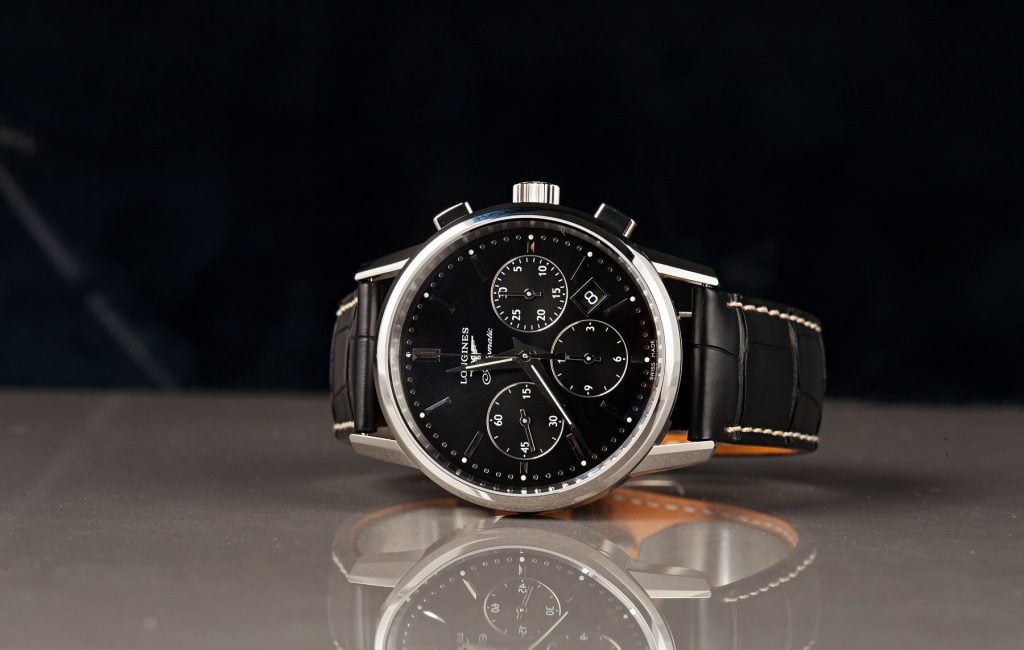
What is the Column Wheel Chronograph?
To put it simply, the column wheel is the part of a movement responsible for initiating the chronograph function. As its name suggests, it’s an actual column made up of several pillars that control the various chronograph functions, such as the start, stop, reset, and even flyback functions.
Levers for each feature either fall into the spaces between these pillars or are lifted by the pillars, activating each function. The moment the wearer presses the side pushers to start or stop the chronograph, a series of mechanisms jump into action, one immediately after the other, with the column wheel at the heart of it all. It offers a smooth operation that works in either an up and down or sideways motion, and its unique design can therefore be paired with either a lateral or vertical clutch within the movement.
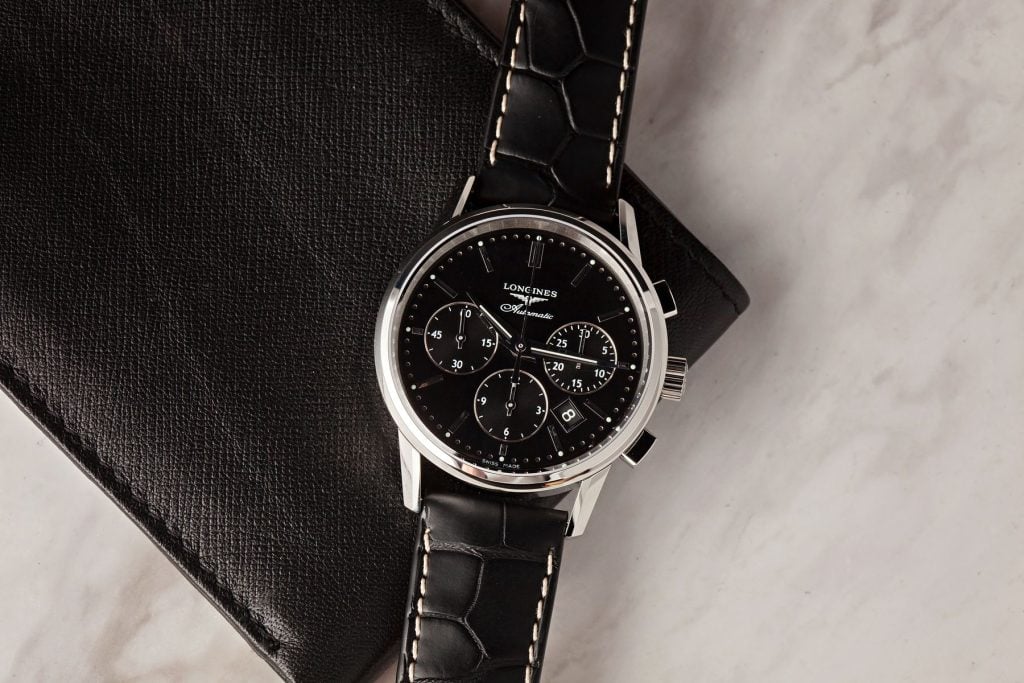
Column Wheel vs. Lever and Cam
The column wheel chronograph is an impressive movement that requires a lot of work hours to create, often equating to a higher price point. While some pieces of the column wheel mechanism can be machined, they still need to be refined by hand, making them more exclusive than the lever and cam alternative. Swiss watch movement manufacturer ETA (formerly Ebauches SA) took on the daunting task of creating a more affordable option to the intricate column wheel that could be mass produced at a more affordable price point, effectively making chronographs more accessible to the average customer.
Their solution was a lever and cam system, a simpler mechanism featuring a cam with three positions to start, stop, and reset the chronograph. It features an upper and a lower cam, with the lower part activating the start and stop functions and the upper part engaging the reset function. However, compared to the column wheel chronograph, the lever and cam system is often said to not operate as smoothly, but it is still a very precise alternative used by some of the industry’s top brands. The most famous movement to utilize the lever and cam system is the Valjoux 7750 chronograph movement.
While less expensive to manufacture, the lever and cam system is still a very robust and reliable mechanism that makes buying a chronograph generally more affordable. On the other hand, the column wheel features a more sophisticated design that is harder to produce because the components are created by hand. Additionally, the chronograph seconds hand inside a column wheel movement is often said to start more smoothly than a lever and cam mechanism because of how the column wheel operates. When comparing to other luxury brands, such as Longines vs Omega, both brands offer column wheel chronographs in some of their models, delivering smooth operation and prestige. However, Longines tends to offer these movements at more accessible price points. On the other hand, column wheel mechanisms are harder to service and repair in the rare instance that a piece breaks or malfunctions.
The argument for column wheel vs. lever and cam chronographs isn’t really about precision as much as it is about how smooth the mechanisms operate and how much precision engineering and machining is required — and the column wheel chronograph wins. The fact that Longines has implemented the mechanism into their catalog at price points that will make any wallet happy is even more impressive.
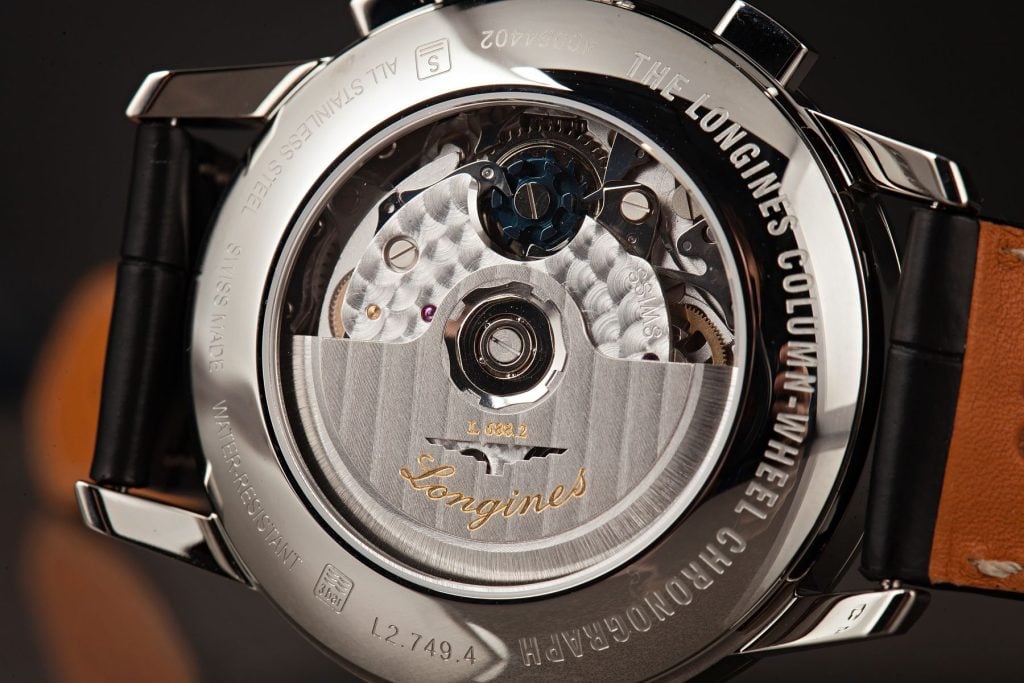
History of Longines Column Wheel Movements
Longines has been producing chronograph timepieces for over a century, starting with pocket watches and evolving from the first chronograph movement to use a single push-piece to the collection currently dominating its catalog. The Longines column wheel chronograph debuted in 2010 with the caliber L688. The automatic mechanical caliber was initially used within the Saint-Imier collection, which was released a few years later in 2012 as a tribute to the village where Longines was founded and continues to operate today.
Around this time, Longines also produced the caliber L788, a throwback to the single push-piece chronograph developed by the brand in 1913, which relies on one pusher integrated into the crown to start, stop, and reset the chronograph mechanism. Only now, it’s a column wheel movement. Additionally, the chronograph registers are in a vertical configuration on the dial. The pusher and dial are offset, mirroring the look of a traditional pocket watch. In 2013, Longines released the Conquest Classic collection, featuring the original ETA caliber L688 movement from 2010.
Longines continues to use each caliber, even today, and has since released several more variations to suit their ever-growing lineup of dress and sports watches. A few examples include the caliber L687 movement used for the current Master Collection, equipped with a Moonphase, an extra hand for the date, and the month and day of the week hidden in the register at 12 o’clock. Another example is the caliber L895 inside the Heritage Classic Chronograph, featuring two registers on the dial and a centrally-mounted chronograph seconds hand.
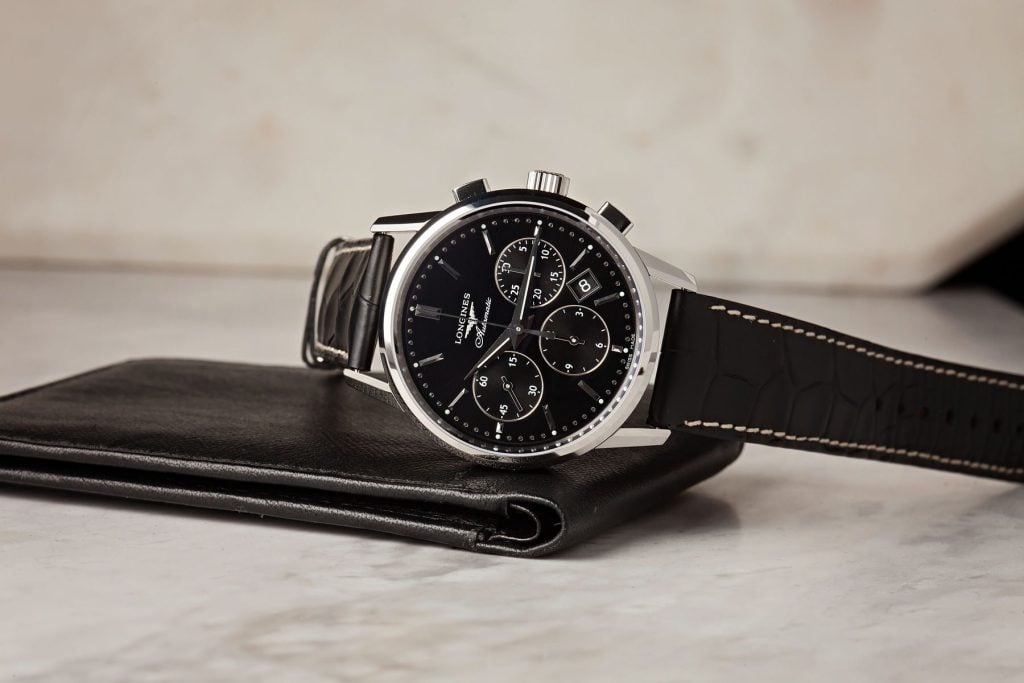
How Much is the Longines Column Wheel Chronograph?
Most of the offerings in the current collection of Longines column wheel chronographs fall below $4k on the retail level and can be found on the secondary market for as low as $2k. When you compare those prices to heavy hitters like Patek Philippe and Vacheron Constantin, Longines watches are a steal.
The movement is a horological innovation revered by many of the industry’s most expensive brands and other purists who put a lot of value into even the tiniest details of a watch. Remarkably, brands such as Longines and Seiko have taken up the task of making the mechanism more financially accessible.
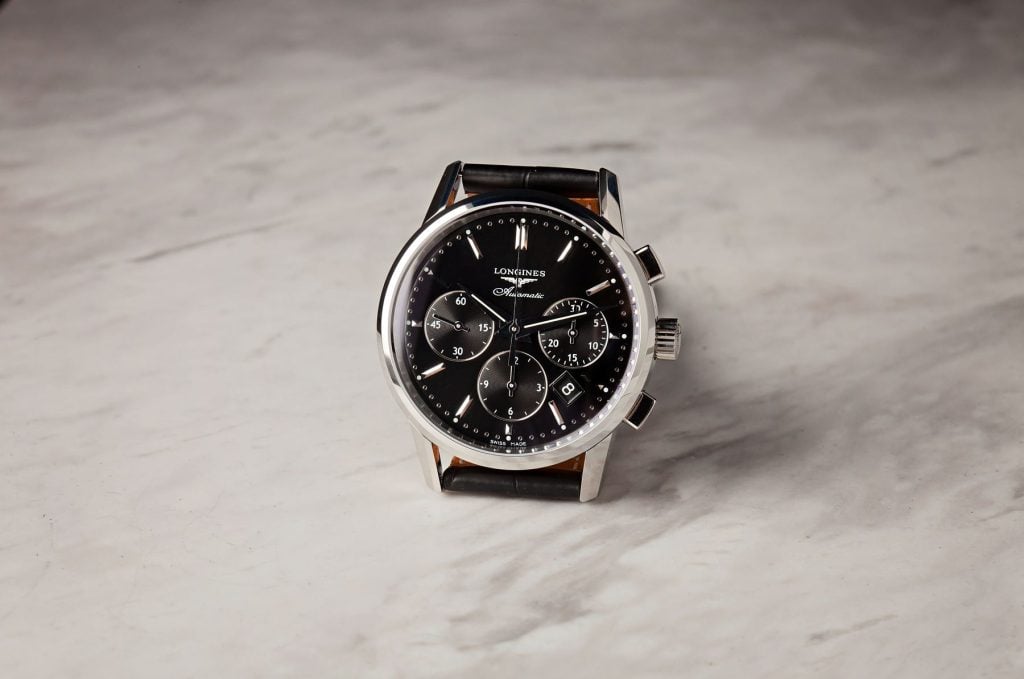
The Best Place to Buy the Longines Watches that Use the Column Wheel Chronograph
Unlike other Swiss watchmaking brands on the market, some of Longines’ most sought-after watches don’t require joining long waitlists to buy one at retail. In fact, you can visit the brand’s website right now and purchase the Longines Master Collection Column Wheel Chronograph for $3,475.00 in a handful of handsome dial colors. Of course, there’s also the secondary market, where you can expect to pay less than retail and give your watch more room to appreciate. We have recently added Longines to our catalog, where each timepiece is competitively priced and guaranteed 100% authentic.
There are certainly many redeeming qualities of the lever and cam mechanism. However, they don’t quite compare to the intricacies and smoothness of the prestigious column wheel chronograph. And, thanks to Longines, it’s very possible to add one to your watch box without breaking your budget.
